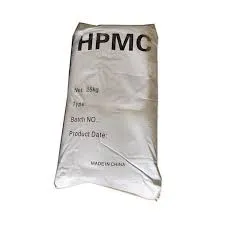
ส.ค. . 21, 2024 04:38 Back to list
Exploring RDP Polymer Innovations for Advanced Material Applications and Performance Enhancements
The Role of RDP Polymer in Modern Applications
RDP polymer, or Redispersible Polymer Powder, is a versatile substance that has gained considerable attention in various industrial applications due to its unique properties. It is essentially a water-soluble polymer that, when mixed with water, can form a stable dispersion. This characteristic makes RDP polymers particularly valuable in industries ranging from construction to adhesives, coatings, and even textile applications.
One of the primary uses of RDP polymers is in the construction industry, particularly in the production of dry mix mortars. These mortars are essential for applications such as tile adhesives, skim coats, and exterior insulation systems. The addition of RDP not only enhances the workability of the mortar but also significantly improves its adhesion, flexibility, and overall durability. For instance, tile adhesives that incorporate RDP polymers exhibit better bonding strength and reduced slip, ensuring that tiles remain firmly in place once installed.
The Role of RDP Polymer in Modern Applications
Moreover, RDP polymers are instrumental in enhancing the flexibility of construction materials. Traditional cement-based products can be brittle, which may lead to cracking or failure under stress. The inclusion of RDP allows these materials to accommodate slight movements and thermal fluctuations, thus extending their lifespan and performance. This flexibility is increasingly important in modern construction environments, where structures are subjected to various stresses and forces over time.
rdp polymer

The coating industry also benefits significantly from the incorporation of RDP polymers. In paints and coatings, these polymers contribute to improved film formation, adhesion, and resistance to water and chemicals. RDP provides a smooth finish and enhances the overall aesthetic appeal of the coatings, which is a critical factor for consumers and end-users. Furthermore, the use of RDP in coatings helps to reduce the amount of volatile organic compounds (VOCs) released during application, contributing to more environmentally friendly practices in the industry.
Beyond construction and coatings, RDP polymers are making their mark in the adhesive sector. They are used to modify the properties of various adhesives, enhancing their bonding capabilities and providing additional durability. RDP-modified adhesives are widely utilized in the manufacture of composite materials, packaging, and other applications that require strong and flexible bond lines.
The versatility of RDP polymers also extends to the textile industry. They are used in textile coatings to enhance water repellency and improve the overall feel of the fabric. RDP can lend softness and flexibility to textile products, ensuring they are comfortable to wear while maintaining their functional properties.
In conclusion, RDP polymer is a vital additive that enhances the performance of a wide range of materials across multiple industries. Its ability to improve adhesion, flexibility, and water resistance makes it an essential component in modern construction, coatings, adhesives, and textiles. As industries continue to seek more durable and efficient materials, the demand for RDP polymers is likely to grow, solidifying their role in advancing material science and engineering. Whether in high-performance construction products or innovative textile applications, RDP polymers are paving the way for smarter, more effective solutions in today's market.
-
Versatile Hpmc Uses in Different Industries
NewsJun.19,2025
-
Redispersible Powder's Role in Enhancing Durability of Construction Products
NewsJun.19,2025
-
Hydroxyethyl Cellulose Applications Driving Green Industrial Processes
NewsJun.19,2025
-
Exploring Different Redispersible Polymer Powder
NewsJun.19,2025
-
Choosing the Right Mortar Bonding Agent
NewsJun.19,2025
-
Applications and Significance of China Hpmc in Modern Industries
NewsJun.19,2025







